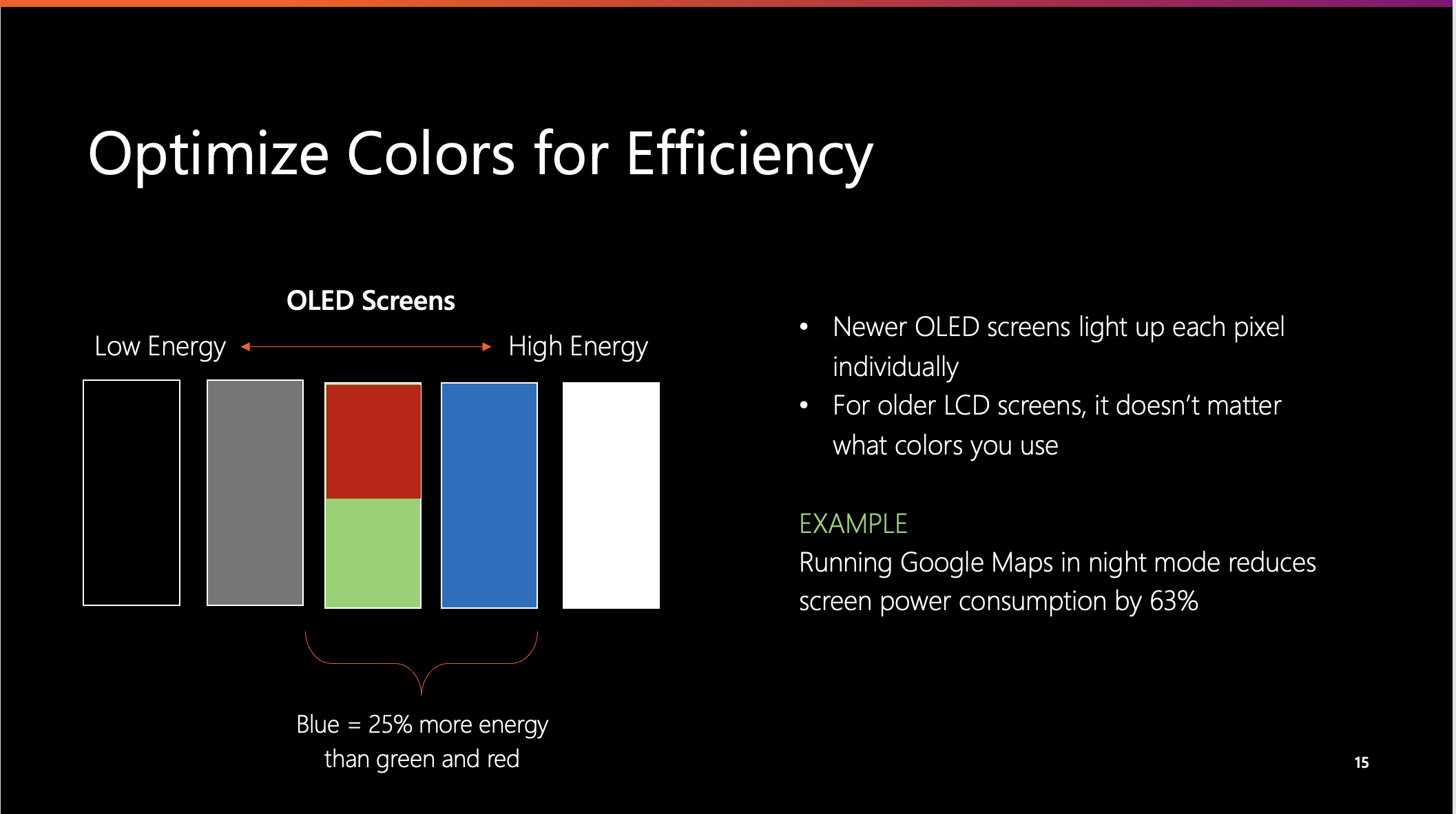
Presentation on Sustainable UX Design
Summary
At Avanade, we are encouraged to take on a “+1” — a project aligned with our personal interests — to supplement our client work. Over the years, I’ve focused on learning about sustainable UX design (that is, how to design software that uses less energy and facilitates users to make informed decisions about the environment) and collecting best practices that I can then share with my colleagues and other UX practitioners outside of Avanade.
The presentation that follows is a collection of sustainable design insights and best practices that I’ve uncovered through my research into this topic. The goal of the presentation is to not only provide the high-level context about how sustainability relates to software, but also to a UX designer’s daily work and have actionable takeaways. I have delivered iterations of this presentation at the Green Software Foundation’s Global Summit, with UX design classes through General Assembly, and at Avanade’s internal Lunch & Learns.
Introduction
The connection between carbon emission and software is not immediately obvious — many people are surprised to learn that tech sector has a carbon footprint similar to that of the airline industry. This section of the presentation explains where emissions from software come from and the benefits, from both environmental and business standpoints, of making advances toward energy efficiency.
Best Practices
While creating sustainable software goes beyond the scope of UX design, there are many actions that designers can take to make the product they’re working on more efficient. This section of the presentation highlights best practices — such as optimizing media and color choices — for UX designers to make their designs more sustainable.
Examples
Probably the best way to learn about sustainable design is to see real-life examples. This section of the presentation demonstrates several different applications that either inform users about how to make more sustainable choices or reduces its energy intensiveness. Included here are both “clean” as well as “dirty” examples of UX, since an understanding of these principles can help people to realize when UX isn’t optimized for sustainability.
Next Steps
The main goal of this presentation is to raise awareness of sustainable UX — often times, it’s not considered at any phase of the design process. But by providing resources, including a free credential from the Green Software Foundation, hopefully this presentation can help designers become informed so they are comfortable enough to incorporate these ideas into their work and help to spread the work about sustainable software to the people they work with.





























